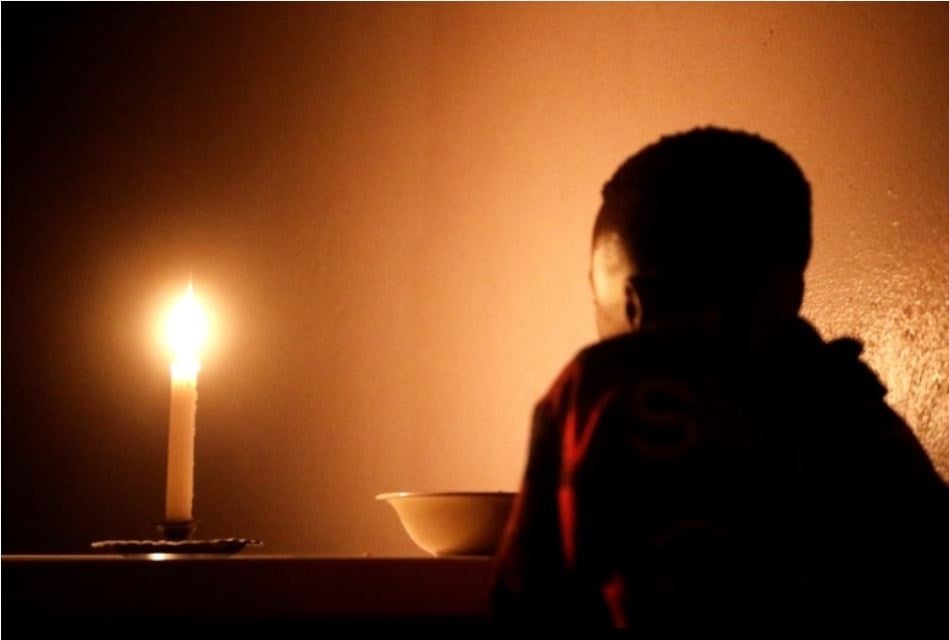
- Power cuts go on for as long as 20 hours in Zimbabwe.
- Households are resorting to solar energy and charcoal, with the crisis set to go on until at least 2025.
- Large businesses are hurt the most by power cuts.
“It’s a long road ahead,” Energy Minister Edgar Moyo said.
Zimbabwe’s peak demand for electricity is 1 850MW, but capacity at the moment falls below 1 200MW from the country’s three power generation plants: the Hwange Thermal Power Station, which produces 674MW, and the Kariba Hydrothermal Power Station, which produces 500MW.
Independent Power Producers (IPP) are insignificant with 38MW, according to figures released by the Zimbabwe Electricity Supply Authority (ZESA) on Friday.
Hwange’s Unit 7 was taken off the grid for regular maintenance and will be brought back in a few weeks, but Unit 8 is also be due for maintenance.
Responding to questions in parliament, Moyo said the situation in Kariba, which should normally generate 1 050MW, was worrying.
“Our normal storing capacity in Kariba is 1 050 megawatts, but we are currently running between 250 and 300 megawatts [ZESA said it’s 500MW], which is already a depressed capacity of generation,” he said.
He added:
According to the government, the country’s energy needs by 2025 will be around 3 500MW.
The government is seeking to reach the 2025 targets by mixing fossil energy and green energy projects, with the private sector playing a leading role.
“In the medium to long term, the government will embrace private sector-led coal mining initiatives and new technologies such as green hydrogen, floating solar panels, battery energy storage systems, and funding some of the renewable energy projects dotted around the country in order to increase domestic generation of electricity,” Information, Publicity and Broadcasting Services Minister Jenfan Muswere told journalists.
The day-to-day reality of deep load shedding
The only areas enjoying unlimited access to electricity are those on the same grid as VIP residences, major hospitals, and broadcasters.
The wealthy are making investments in solar power and backup generators that run on petrol and diesel.
Solar energy is gaining popularity since it doesn’t require fuel and is ultimately less expensive in the long run.
Two 24-volt panels and four 12-volt batteries make up a typical solar home station.
However, the average salary of around R4 500 for government workers and other common folk makes sustainable energy an unaffordable alternative.
As a result, outdated techniques like charcoal have become popular.
Charcoal is reasonably priced for the average person. A 50kg bag lasts for a month and costs roughly R100.
To manufacture charcoal, vendors harvest and burn mopani trees in the wild.
Liquefied petroleum gas (LPG) is becoming more popular in urban centres.
The Zimbabwe Energy Regulatory Authority (ZERA) estimates that by December this year, the country would have consumed 65 million kilogrammes.
A decade ago, the consumption was just five million kilogrammes.
Still, gas is expensive for ordinary people when it sells for about R38 per kg.
On 28 October, when South Africa played in the rugby World Cup final, it was a big deal for many Zimbabweans.
It was a must-watch final against New Zealand. However, for half the match, in some parts of the country, there were power outages, and revellers at one pub had to cheer the Springboks on in the darkness.
“As we approach December, running a pub of this kind would be more expensive. I would need a standby generator and, in the long run, a solar system. But solar will not power the fridges. It’s tough times ahead,” said Emmanuel Moyo, a pub owner in Bulawayo, the second-largest city.
Bigger businesses are also feeling the effects of power outages.
National Foods, one of the largest manufacturers and marketers of food products, now relies heavily on generators, and its diesel uptake has gone up by 448%, further driving up the cost of its products.
“Business was more reliant on generators in Financial Year 2023, with 3 175 more hours of generator power, which attributed to the 448% increase in usage,” the company said in its financial statement.
With the problem likely to be around for a long time, National Foods is contemplating constructing a solar power station.
“Working with Distributed Power Africa, a concept design for a 2MW solar installation at the Aspindale site has been generated and assessed. Although no firm plans for progressing the project have been approved, work continues on refining the concept and assessing the proposal,” the company said.
The situation is worse for tobacco farmers, one of Zimbabwe’s major foreign currency earners.
Speaking to the state-run Herald, Zimbabwe Tobacco Association (ZTA) chief executive officer Rodney Ambrose said: “Growers are struggling to complete their irrigation cycles and are relying on diesel-powered generators, incurring huge costs.”
Ambrose said that since using generators for irrigation was not a sustainable alternative, crop quality, output and producer viability would probably be jeopardised.
Power demand will rise even more when the irrigated crop begins to cure in early December.
Since the beginning of the marketing season, Zimbabwe has shipped more than 98 million kilogrammes of tobacco, demonstrating some progress in its goal of reaching R30 billion $1.6 billion) in total exports – a significant increase from $900 million earned in the 2022 season.


